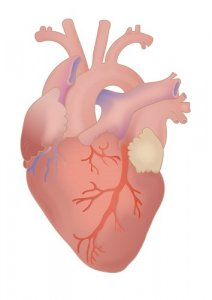
By: Mike Licht
An advance directive. What is it? Why do we need it? Isn’t it SO morbid? Why do I need to make a plan for something that may never happen especially since I am healthy? In our society, we like to live life in the here and now, but sometimes, we need to plan for the “what-if”. Advance directives do just that. How do we broach this topic? It’s simple, just ask your closest loved ones. Although they may be caught off guard as this is not the typical nor quintessential dinnertime conversation, having an idea about what they would or would not want for medical treatment should they become unable to make healthcare choices for themselves, could not only decrease suffering but lead to decreased levels of stress at an already difficult time.
To get an idea of what an Advance Directive is, take a peek at this clip that explains how it works.
…..After watching this video, did you realize that an advance directive isn’t just a morbid plan about a loved ones death even though they are healthy now? For most, this is a common misconception which is what leads to barriers regarding the creation of an advance directive plan. Creating a plan is simple, and starts with a conversation with your famly regarding whether or not you would like certain life-sustaning measures such as: CPR, artificial nutrition, organ donation, and/or respiratory support as well as appointing someone to be your voice should you be unable to advocate your wishes personally. These wishes then get discussed with your doctor and placed into a document and legalized by a notary and/or lawyer. As one grows older and/or their health status changes, adjustments may be necessary. So, why is this so important and what are the benefits? Merlane & Armstrong (2020) discuss the benefits that include patient and family confidence/empowerment, reduces uncertainty, determines clear wishes and desires leaving nothing to be decided by family members, and ensures/prevents unwanted treatment to be performed.
To further clarrify, listen to this fun poem to put these concepts into context.
With so many benefits of an advance directive, why don’t more people have them? Well, because of all of the myths that lie around understanding what they truly are that we have “debunked”. As clarrified above, an advance directive plan lays out clear wishes and desires of each person well before it may ever be needed and an appointed spokesperson is chosen to ensure that these wishes are carried through. Family members, if not given some sort of guidance, may act out of emotion or fear, which could lead to decisions made that would contradict or disrespect what the person might have truly wanted. Above all, Banerjee & Novelli (2015) discuss how advance care planning provide the utmost dignity and respect for both the patient and family members. To understand some real-life perspectives and stories, view the two TED Talks below. Additionally, links are listed to help guide your planning today, to be prepared for tomorrow.
Additonal Sites for Information:
(National Institute on Aging: US Department of Health)
https://www.nia.nih.gov/health/advance-care-planning-healthcare-directives
AARP: Forms to Fill Out, State by State
https://www.aarp.org/caregiving/financial-legal/free-printable-advance-directives/
Mayo Clinic: What is an Advance Directive? What is included?
https://www.mayoclinic.org/healthy-lifestyle/consumer-health/in-depth/living-wills/art-20046303
References:
Banerjee, R., & Novelli, B. (2015). Advanced Illness Care: We Can Do Better. Journal of the American Society on Aging, 39(2), 106–111.
Merlane , H., & Armstrong , L. (2020). Advance care planning. British Journal of Nursing, 29(2), 96–97.







